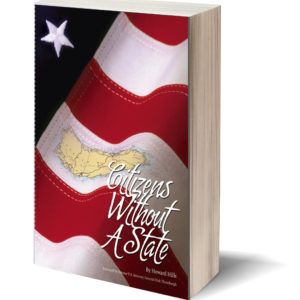Senator William Parkinson, a member of the territorial legislature in Guam, has introduced a resolution calling for statehood for Guam, an unincorporated territory of the United States.
Guam has a statehood movement, but has never formally requested statehood before. Guam held a status referendum back in 1982 and 73% voted for the “commonwealth” option. As we know, “commonwealth” in the United States has no real meaning, so this was realistically just a vote to remain a territory. However, it clearly defeated statehood.
There has not been another status vote since then — 43 years ago. A poll in 2015 found that statehood was by far the preferred status choice. A more recent official plebiscite plan was derailed by Guam’s choice to limit voting to a single ethnic group. They allowed votes only from “native inhabitants,” which they defined as people who became U.S. citizens in 1950 or who are descended from the original U.S. citizens. this is roughly comparable to saying that only descendants of the original British colonists could vote in the United States, so it is incompatible with the U.S. Constitution. It is not clear whether Guam’s legislature is still trying to work out a way to hold a plebiscite or not.
The resolution
However, Parkinson is not willing to wait. He “said the idea of a war between the US and China, ‘with Guam smack down in the middle of it,’ keeps him up at night,” according to RNZ.
Statehood looks like the solution. “States are forever, territories for empires are things that could be traded back and forth like chips in a pile, and I myself would not want to be some empire’s trading chip,” Parkinson said at a press conference. “We are standing in a moment of history where two great empires are standing face-to-face with each other, about to go to war. We have to be real about what’s going on in this part of the world. We are a tiny island but we are too strategically important to be left alone. Stay with America or do we let ourselves be absorbed by China?”
Parkinson called for a referendum on the question.
Obstacles to statehood for Guam
Guam has fewer than 200,000 residents. Many observers believe that this is just too small to be state. There are counterarguments, however. Traditionally, 60,000 was the minimum population for a state, and several states snuck in with fewer than that (we’re looking at you, Arkansas and Colorado). Even today, Wyoming has only 584,000. This is nearly triple the population of Guam, but a tiny fraction of California’s 39,431,263 residents.
At the very least, we must conclude that population is not a big issue for states.
Another issue is the one that arose during the attempts to hold a plebiscite a couple of years ago. The indigenous Chamorro people have a unique cultural and historical identity. Issues related to land rights, cultural preservation, and self-governance are central to discussions about Guam’s future. But special laws for certain ethnic groups are not possible under the U.S. Constitution. As a territory, Guam has some leeway — the Insular Cases determined that the U.S. Constitution doesn’t apply fully in unincorporated territories. For states, however, it is the law of the land. States don’t get to opt out of any part of the constitution.
Future possibilities
Assuming Guam worked out these hurdles, this could be a good opportunity to request statehood. The current administration is showing an expansionist mindset that we haven’t seen in the United States for a century. We will watch the unfolding of the debate with interest.
Puerto Rico should also take advantage of this sea change in attitudes. Puerto Rico has none of the obstacles facing Guam. As the most populous of the U.S. territories by far, Puerto Rico is ready for the rights and responsibilities of statehood. Reach out to your congressional representatives now and ask them to get on the right side of history by supporting statehood for Puerto Rico.







No responses yet